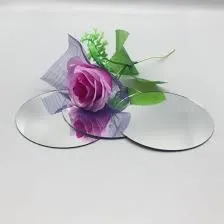

Dark Reflective Glass A Modern Architectural Marvel
In the realm of contemporary architecture and design, dark reflective glass has emerged as a significant material that not only enhances aesthetic appeal but also offers practical functionality. With its sleek, modern look, this innovative building material has become a favorite among architects and designers striving to create striking structures that harmonize with the surrounding environment while ensuring energy efficiency and occupant comfort.
Aesthetic Appeal
Dark reflective glass provides an unparalleled elegance to buildings, offering a sense of sophistication that is hard to match with other materials. Its deep tones coupled with reflective surfaces allow for stunning poetic interactions with light. During the day, the glass reflects surrounding landscapes and skies, effectively creating a visual cohesion between nature and man-made structures. This ability to blend harmoniously with various environments contributes to a modern urban aesthetic. Iconic skyscrapers clad in dark reflective glass, such as the 432 Park Avenue in New York City or the Heron Tower in London, showcase how this material can not only elevate the design of individual buildings but also enhance the skyline as a whole.
Functional Benefits
Beyond mere aesthetics, dark reflective glass plays a crucial role in performance and functionality. One of the primary advantages it offers is energy efficiency. The reflective properties of the glass help to reduce the amount of heat gain inside buildings, minimizing the need for excessive air conditioning during hot months. This leads to lower energy consumption and reduced electric bills, making it a more sustainable choice for building projects.
Moreover, dark reflective glass can improve the comfort of occupants. The material minimizes glare, allowing for more comfortable working and living environments. This is particularly important in commercial settings where employees can be adversely affected by constant blinding sunlight. By balancing natural daylight and enhancing visibility without compromising on comfort, dark reflective glass strikes a perfect equilibrium.
Privacy and Security

Privacy is a growing concern in densely populated urban centers. Dark reflective glass serves as a shield against prying eyes while still allowing natural light to penetrate interior spaces. Buildings constructed with this type of glass often appear opaque from the outside, granting occupants a sense of security and seclusion. This feature is particularly valuable in residential settings, where homeowners are keen on maintaining their privacy without resorting to heavy curtains or blinds.
In addition, the toughness of dark reflective glass can also enhance security. Many types of this glass are treated to increase their strength and resistance to breakage, making them a safer option for commercial and residential buildings alike. This resilience can deter vandalism and enhance safety, contributing to a secure environment for occupants.
Environmental Considerations
As the world increasingly shifts towards sustainability, the demand for eco-friendly building materials grows more stringent. Dark reflective glass can be manufactured with environmentally-conscious processes, contributing to sustainable construction practices. Moreover, its energy-efficient properties align with green building initiatives, making it a favorable choice for projects aiming for certifications such as LEED (Leadership in Energy and Environmental Design).
The reflective quality of dark glass not only reduces solar heat absorption but also minimizes light pollution by limiting excessive brightness emanating from buildings at night. This consideration is particularly crucial in urban areas where light pollution can disrupt local ecosystems and affect the well-being of residents.
Conclusion
In conclusion, dark reflective glass represents a harmonious blend of aesthetic elegance and functional superiority in contemporary architecture. Its contributions to energy efficiency, occupant comfort, privacy, security, and environmental sustainability make it a smart choice for architects and builders alike. As urban landscapes continue to evolve, the use of dark reflective glass is likely to grow, adding to the beauty and functionality of the structures of tomorrow. Whether utilized in commercial high-rises or residential homes, this remarkable material stands as a testament to modern innovation in the field of architecture.